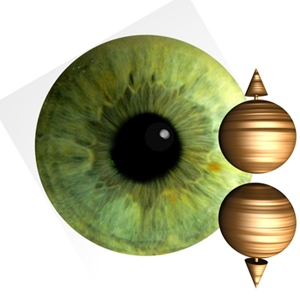Highlights
In search of certainty about superpositions: paper in Nature Communications

Tests of the 'Leggett–Garg inequality' are a way of indirectly seeing a quantum superposition.
An international team of researchers including scientists affiliated with CQT report new experimental proof that strange quantum 'superpositions' are undeniably real. The team's approach, applied for now to atomic nuclei, could be extended to search for superpositions in macroscopic objects. The technique relies on measurement of something known as a 'Leggett–Garg inequality'.
As well as being of philosophical interest, the experiment demonstrates tools for the precise manipulation and readout of a quantum system that are of potential practical interest, for example for building quantum technologies such as information-processing devices. Details are published in a 3 January paper in Nature Communications.
Superposition refers to a single object being in two or more mutually exclusive conditions at the same time. In the 1930s, Erwin Schrodinger proposed a famous thought experiment in which a cat is put into a superposition of a dead and an alive state to highlight the unsettling consequences of this quantum prediction in the everyday world.
Since then, the effects of quantum superpositions have been seen in experiments involving small objects such as electrons and molecules. For example, in double slit experiments, particles fired at two slits in a screen seemingly pass through both slits at once to create an interference pattern on the other side. However, researchers still debate whether superpositions can exist for large objects, with some people arguing that some as yet undiscovered physical law prevents such strange effects from occurring on the everyday 'macroscopic' scale.
In 1985, Tony Leggett and Anupam Garg devised an ingenious experimental method that rigorously checks for the existence of superposition: the test provides far stronger proof of superposition than the two-slit experiment, and moreover it can in principle be applied to systems of any size (even cats!). The approach works by assuming that there are no superpositions (a so-called 'realist' viewpoint), then showing that the measurable consequences differ from those predicted by quantum physics. One has then only to perform the experiment to see who's right — but it's a tough experiment to do.
The measurable consequences highlighted by Leggett and Garg are to do with how a system evolves in time. The challenge is to measure the system's evolution in such a way that the results can't be dismissed as influenced by the measurement. Various approaches have been tried before. Simon Benjamin, the lead theorist on the paper, who is at the University of Oxford and a Visiting Research Associate Professor at CQT, explains how the new work is different: "It seems the test will be impossible — we know from quantum mechanics that a measurement will always change a system to some extent. Some people try for 'weak measurement' meaning that they make the measurements as gentle as possible. However, Leggett already had a better idea in his paper — the resolution comes from the fact that only the realist needs to think the measurements are non-invasive. The idea is simple and is called a 'negative result measurement'. If we carefully look for a certain state and don't see it, then we can conclude that the system was in the other state but that we didn't touch it (from a realist view)."
To achieve the 'ideal negative result', the group took a crystal of purified silicon containing an ensemble of phosphorous impurities. Using one electron per impurity to indirectly examine each phosphorous nucleus, the team were able to expose quantum superpositions in the nuclei's spin (akin to the spins being magnetic compass needles pointing both up and down at once). "There is only a tiny difference between the results expected by quantum mechanics versus the realist predictions," says the paper's first author, George Knee of the University of Oxford. "To expose this difference, it was necessary to cool our sample to only a few degrees above absolute zero, and manipulate it very precisely" he adds.
"The result doesn't tell us anything shockingly new about the universe because already pretty much everyone believed that nuclear spins can be in superpositions. My enthusiasm for the paper is that we extend Leggett–Garg theory and show the original LG test for 'quantum weirdness' can be done," says Simon. Previously, LG tests have been performed on single photons and superconducting devices, and most recently on single spins in diamond, yet none of these experiments implemented the ideal negative result measurements proposed by Leggett and Garg.
The hope is to extend such measurements to bigger objects. "You need to start the program of testing Leggett–Garg somewhere," says Simon. Systems such as miniature mechanical cantilevers could be next. Cat owners can relax — it is far beyond current experimental capabilities to even attempt to put such big objects into a superposition.
The research involved 12 collaborators. The CQT-linked researchers — Simon and Erik Gauger, a CQT Research Fellow currently in Oxford as an academic visitor — worked with others from the University of Oxford; the Leibniz Institut for Kristallzuchtung in Berlin, PTB Braunchsweig and VITCON Prokectconsult GmbH, all in Germany; Keio University in Yokohama, Japan and Simon Fraser University in British Columbia, Canada.
For more details, see Nat. Commun. 3, 606 (2012); arXiv:1104.0238.






